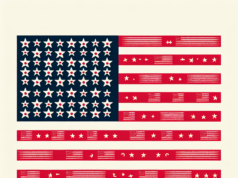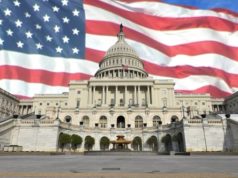
The Emergency Quota Act – A Major Milestone in the US History
The United States is founded on the principles of diversity, inclusiveness, and democracy. It is a melting pot of cultures, religions, and races, and the American people celebrate and cherish this diversity. However, this was not always the case. The country has gone through many phases of discrimination, xenophobia, and racism in the past. One such dark phase in American history was the period between 1921 and 1965 when the country had stringent immigration policies, primarily aimed at limiting the number of immigrants from specific regions.
In this article, we will explore the Emergency Quota Act of 1921, which marked a significant milestone in US immigration history, and how it impacted the country’s demographics, politics, and social structure.
The Emergency Quota Act of 1921 – An Overview
The Emergency Quota Act, also known as the Immigration Act of 1921, was signed into law by President Warren G. Harding on May 19, 1921. The Act was the first federal law that limited the number of immigrants allowed to enter the US based on their country of origin. It was introduced in Congress as an emergency measure to address the growing concerns about the increasing number of immigrants who were coming into the US, mainly from Southern and Eastern Europe.
The Act set a limit on the number of immigrants who could be admitted to the country in a given year, based on a quota system. Under this system, quotas were established for each country, based on the number of people from that country who had been living in the US in 1910. The Act limited the total number of immigrants to 357,000 per year. This figure was based on the number of immigrants who had entered the US in 1910 – a number that many argued was already too high.
The quotas were established based on two categories of immigrants – those from the Western Hemisphere and those from the Eastern Hemisphere. The Act specified that 86% of the available visas would be reserved for immigrants from countries in the Western Hemisphere while only 14% were reserved for those from the Eastern Hemisphere.
Impact of the Emergency Quota Act
The Emergency Quota Act of 1921 had far-reaching implications for US immigration policy, demographics, politics, and social structure that are still felt today.
Reduced Immigration
The most significant impact of the Emergency Quota Act was the significant reduction in the number of immigrants allowed to enter the US. The Act brought about an immediate decline in the number of immigrants from Southern and Eastern Europe, regions that had been the primary source of immigrants in the previous decade. The number of immigrants dropped from over 800,000 in 1920 to 300,000 in 1921. By 1924, the number had further reduced to 150,000.
The decline in immigration had a significant impact on the US economy. Immigration played a vital role in filling labor shortages in many sectors, such as agriculture, mining, and manufacturing. The limited number of immigrants allowed into the country meant that there were labor shortages in some sectors, leading to a rise in wages and prices.
Changing Demographics
The Emergency Quota Act of 1921 also had a profound impact on the country’s demographics. The Act favored immigrants from Northern and Western Europe, who were considered more desirable and assimilable compared to their counterparts from Southern and Eastern Europe.
The quotas were based on the number of immigrants from each country who had been living in the US in 1910. This meant that countries with larger populations in 1910, such as Italy and Poland, had lower quotas compared to countries with smaller populations, such as England and Germany. This system favored immigrants from Northern and Western Europe, who had a higher population in 1910 and, therefore, had higher quotas.
As a result, the demographics of the US changed significantly, with the country becoming less diverse. The number of immigrants from Southern and Eastern Europe reduced significantly, while the number of immigrants from Northern and Western Europe increased.
Politicization of Immigration
The Emergency Quota Act of 1921 marked the beginning of a trend where immigration policy became politicized. The Act was passed at a time when the country was facing numerous challenges, including economic recession, labor unrest, and a rising fear of radicalism. Politicians used the immigration issue to push their political agendas and gain popularity with the public.
The Act appealed to a broad section of Americans who were concerned about the rising number of immigrants and who saw them as a threat to American jobs, culture, and way of life. The Act was largely supported by labor unions, who saw immigrants as competition for American jobs.
The public sentiment towards immigrants was fueled by stereotypes and prejudices, and immigrants were blamed for various issues facing the country. Immigrants were accused of being responsible for the decline in wages, the spread of disease, and the rise of crime.
Challenging the Emergency Quota Act
The Emergency Quota Act of 1921 faced opposition from various groups, including civil rights organizations, religious groups, and the business community. These groups argued that the Act was discriminatory and violated the principles of fairness, equality, and democracy.
The National Catholic Welfare Council was one of the most vocal opponents of the Act. The Council argued that the Act favored European immigrants and discriminated against immigrants from other regions, such as Asia and Africa. The Council also argued that the Act violated the principles of religious freedom since it favored immigrants from Protestant countries.
The business community was opposed to the Act since it feared that the reduced number of immigrants would lead to labor shortages and inflation. The American Manufacturers Association argued that the Act would lead to reduced production, reduced exports, and inflation.
The Emergency Quota Act was challenged in several court cases, but the Supreme Court upheld its constitutionality. The Quota System remained in place until 1965 when it was abolished under the Immigration and Nationality Act of 1965.
Conclusion
The Emergency Quota Act of 1921 was a significant milestone in US immigration history. It was the first federal law that limited the number of immigrants entering the US based on their country of origin. The Act led to a significant reduction in immigration, a change in the country’s demographics, and the politicization of immigration policy.
While the Act appealed to a broad section of Americans who were concerned about the rising number of immigrants, it faced opposition from various groups who saw it as discriminatory and inconsistent with the principles of democracy, freedom, and equality.
Today, the US celebrates its diversity and continues to welcome immigrants from all over the world. While the Emergency Quota Act of 1921 was a dark chapter in US immigration history, it is a reminder of the challenges the country has faced in the past and the significant strides it has made towards inclusivity, diversity, and democracy.
The most important legislation from the early twentieth century came in 1921. Referred to as the 1921 Quota Act, this legislation utilized immigration statistics to determine a maximum number of immigrants allowed to enter the United States from each nation or region. The numbers were skewed to favor immigration from western European nations while severely curbing immigration from areas perceived to be undesirable.
These immigration quotas would change over the years, but would put a lid on fair immigration policy until the 1960’s. Immigration statistics show the effects of these immigration quotas on the foundational cultural make-up of the nation. Only since the 1960’s did American immigration reflect a global consideration that transcended preconceived notions and stereotypes.
The new immigration quotas utilized immigration statistics from the census of 1910 to determine the eligibility of immigrants coming from certain regions. Theoretically, this would allows a fixed flow of immigrants, however, immigration statistics show that this turned out to be overtly prejudice. The new legislation utilized a national origins formula that took the number of foreign-born immigrants that lived in the US in 1910 and would then allow three percent of each demographic to enter the country.
Due to the immigration statistics at this time, this program favored immigration that came mostly from Western and Northern Europe. The immigration quotas established that around three-hundred and fifty thousand immigrants would be permitted access to the United States. Some groups and individuals were exempted from the immigration quotas, and these included; people that lived in any country of the Western hemisphere for one year prior to petition, non-immigrant aliens that were in the country for pleasure or business, and those that were determined to be part of a learned occupation.
The one stipulation, in which the immigration quotas that allowed for individuals to live in a Western-hemisphere nation for one year and then apply for immigration outside of the quotas, presented specific problems. Quickly after the 1921 emergency quota act was passed, the legislature passed another measure to change the one year minimum to a five year minimum to bar those trying to bypass the immigration emergency quota act.
Some criticize the way in which the nation would allow and continues to allow learned people, or those of a particular talent-set, to access the country without much problem. The education requirement automatically blocks those that would likely benefit the most from immigrating to America.
The immigration quotas of 1921 started a long line of legislation that attempted to block certain types of immigration. Immigration statistics display the detrimental effect these quotas had on specific ethnic groups.
























